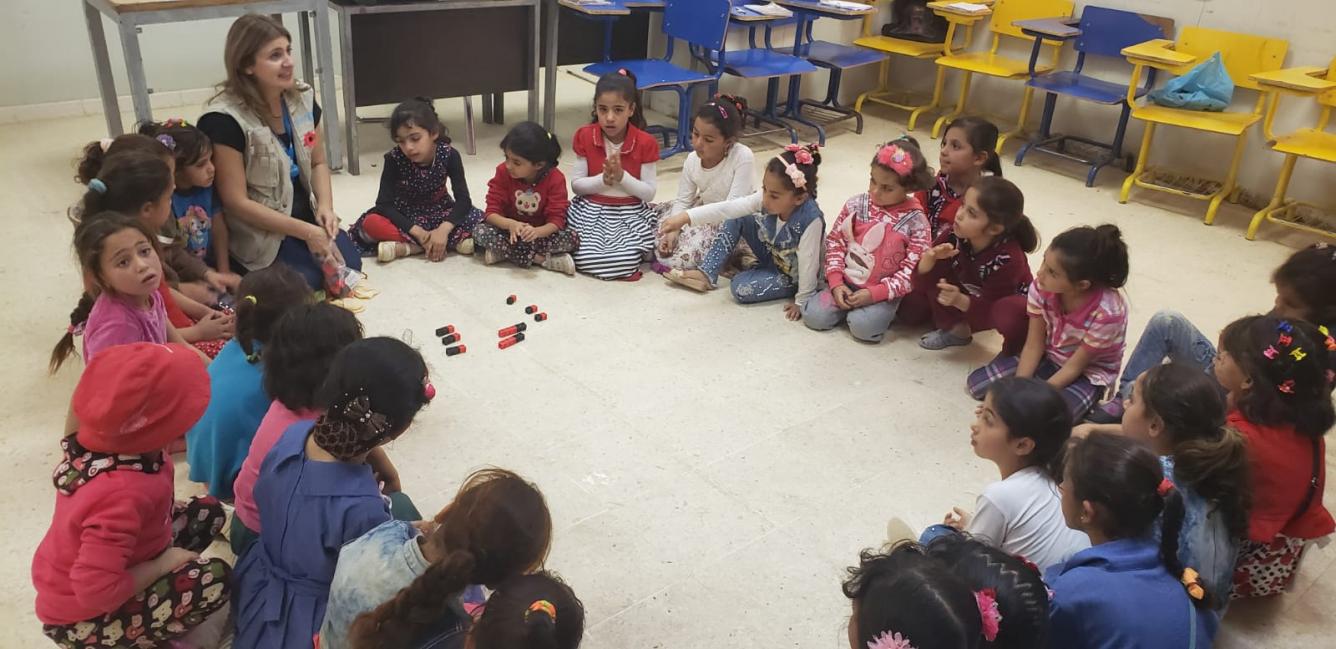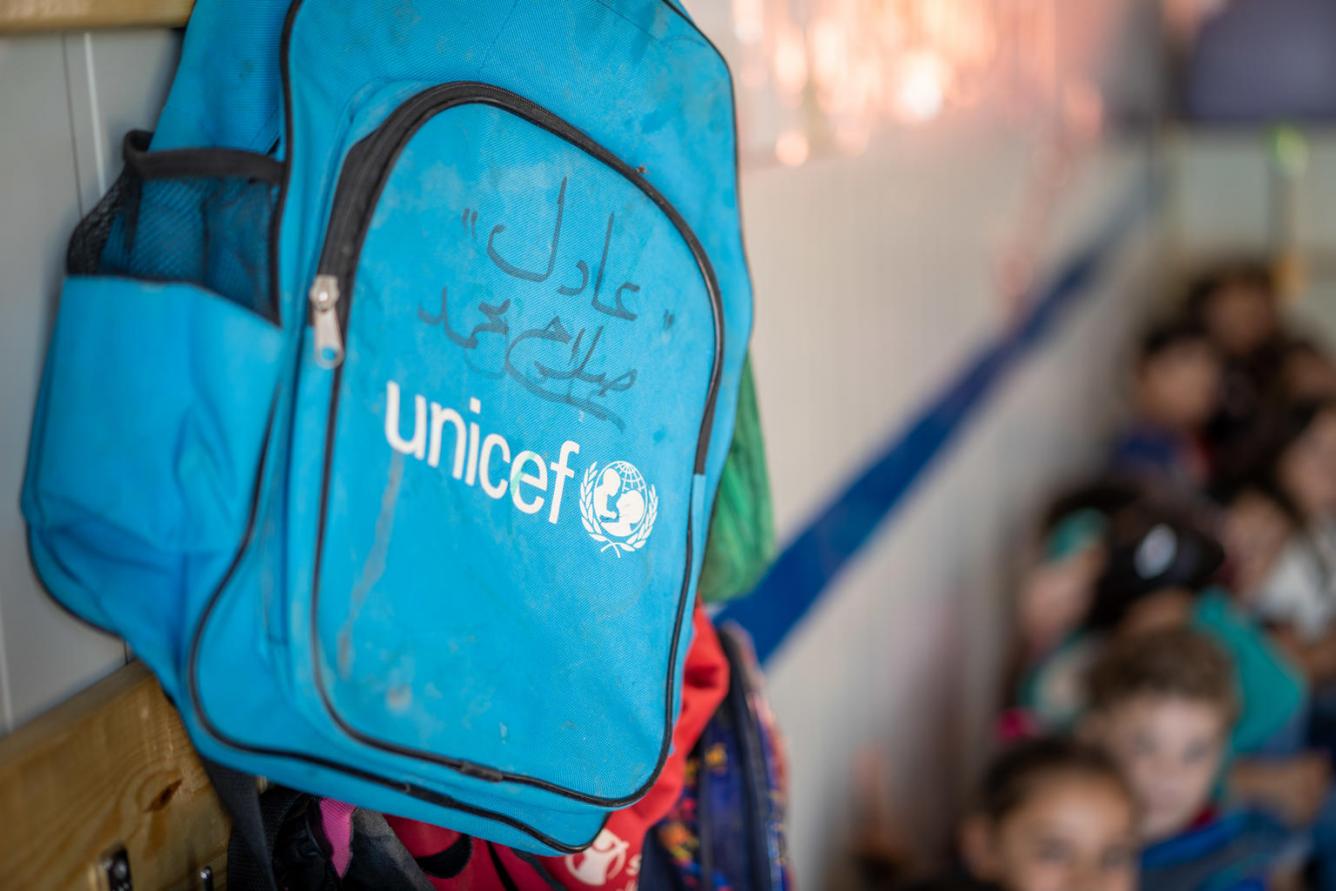A World Inside a Refugee Camp: Children of Zaatari – Part 1
Guest blog by UNICEF Canada Ambassador Bayan Yammout.
Looking at [Zaatari refugee camp] from the outside, the first thing that came to my mind is how could anyone teach children about the outside world when they are living inside a refugee camp? How could any of the children I saw around me explore the world and develop their natural curiosity? I couldn’t even begin to imagine.
Tens of thousands of children have never been outside Zaatari. Most children who are seven years old or younger were born inside the camp. This is their entire world; they have no idea what is outside of the camp’s boundaries.
These children are growing up thinking this is how human life looks like: your house is a caravan, your school is a dark room with plain walls, all of your basic needs, even the water you drink, are met thanks to hard working people with vests and a logo, stepping out of your camp is dangerous, your parents talk about a country you are supposed to belong to but can’t even imagine how it looks like. How can a child build an identity? How can they develop a sense of belonging? I can’t imagine what they feel and how their future will look like five years from now.
It reminds me when my parents used to talk to me about Beirut before the war. I hated it simply because I was just not able to imagine what a world without war looks like. My mom used to say that they used to have a movie theatre in downtown Beirut. A movie theatre? What does that look like? Is it really dark inside? What I saw as a child was a completely destroyed downtown. It was out of bounds. It smelled and I always imagined that it could be haunted by the thousands of people who died there. The first time I entered inside a movie theatre, I was maybe 15 years old. They opened one close to my school. I was terrified but very excited when I went in.
Now back to the children at Zaatari. In one activity at the camp, I asked the teenage girls who were participating what they would change in the world if they had a super power. Here are some of their answers: “I would stop corruption,” “I would put a smile on the face of all orphans,” “I would make sure the dreams of all girls become true…,” “I would help the poor,” “I would return to my country,” “I would travel back to Syria and see my grandpa,” and “I would make everyone live in peace.”
The programs at Makani offer a safe place for these teens to express themselves and dream.

Most of my work is in the learning support programs in Makani Centres. Inside those classrooms, I see nothing but happy, silly, funny, curious boys and girls who are eager to learn. They ask questions, participate in activities, and are expert at seeking attention! Their talented facilitators are also Syrian refugees. Despite the heavy burden they carry on their shoulders, they give 100% of their energy and knowledge to teach the children and youth a well-designed comprehensive curriculum. Child protection messages and life skills training are embedded in the literacy and numeracy lessons they teach. But I still wonder if this is enough.
When you are teaching children in a refugee camp, I think you must bring the outside world inside. For that, you need technology, books, and tons of resources! When my student in Canada asks me where bread comes from, I will bring in books and resources, I will share pictures and videos from the internet, I might even plan a trip to the bread factory, for us teachers the sky’s the limit!
For the facilitators here at the Makani (‘My Space’ in Arabic) centres, access to resources is extremely limited and strongly depends on donor’s generosity. I wish I could use a magic wand to create a small library in every Makani centre with tons of picture books, fiction and non-fiction stories. Currently, only one Makani Centre has access to a library which is shared with their partner RELIEF International, who operates inside this centre. Another 2 centres have a small shelf of a dozen books. The 10 other centres don’t have books.

The natural curiosity of every single child at Zaatari (population 76, 602; including 42,667 children) and Azraq (population 35,860; including 21,477 children) refugee camps would be further developed only when Canadians donate to UNICEF and their partners. It is the responsibility of us, the global community, to ensure that these children receive quality education and access to the outside world. That is their right!
The message I want to bring to Canada is this: For these children, the connection to the outside world strongly depends on donor support. My generosity and yours are key in giving these children a chance to learn about the world.
Read Part 2 of Bayan's blog here.
